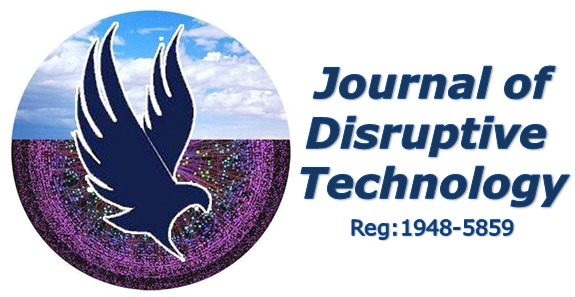About JOFDT (Reg:1948-5859)
The Journal of Disruptive Technology (JOFDT) is a multidisciplinary journal with a mission to facilitate online (advanced) learning, research, and experience in collaboration with its publishing of peer-reviewed articles to educate, enhance, positively disrupt while adding to the body of knowledge globally.
Our purpose is to serve as a conduit for doctoral learners, colleagues, and researchers to publish scholarly articles that contribute and become addictive to the global body of knowledge.
Our mission is to facilitate online learning, research, and experience in collaboration, through the publishing of peer-reviewed articles to educate, enhance, and add to the body of knowledge globally.
The Journal of Disruptive Technology welcomes the submission of manuscripts that would contribute significantly to human progress and the body of knowledge in the space of disruptive technology, innovation, and positively disruptive concepts and or constructs.
As a benchmark, the JOFDT seeks to improve submissions before approval for publication. Our peer-reviewed process reflects the necessary rigor and scrutiny needed to bring forth the submission’s essence. The submission should be novel and substantial. Since our distribution is global, our reviewers follow guidelines that are thorough, rigorous, and standardized. In addition, each submission has a dedicated quantitative and or qualitative review, with unnecessary delays to the submission’s publication if accepted kept to a minimum. Our practice is to circulate galley proofs before final submission, with each manuscript printed with its submission date, the revision date, and an acceptance date. The Journal of Disruptive Technology uses Open Journal Systems (OJS), an open-source software application for managing and publishing scholarly journals.
While the traditional operational functions of the journal include peer review, editing, markup, typesetting, proofing, printing, and distribution of the paper texts; the journal’s operation has established well-formed processes in the areas of editorial, peer review, publication archiving, and access provision. Since the journal’s rating depends on manuscript rejection rate and citation count, the editor is bound to the maintenance of the journal’s quality standards by choosing the best-qualified experts or peers who then review the submissions and recommend acceptance, rejection, or various degrees of revision. To be successful, our peer review process is committed to the estoppel of irrelevant findings, unwarranted claims, unacceptable interpretations, and personal views. The results from the process will depict one of the following conditions: (a) unconditional acceptance, (b) acceptance with modifications, (c) rejection with changes and re-submission, and (d) unconditional rejection.

